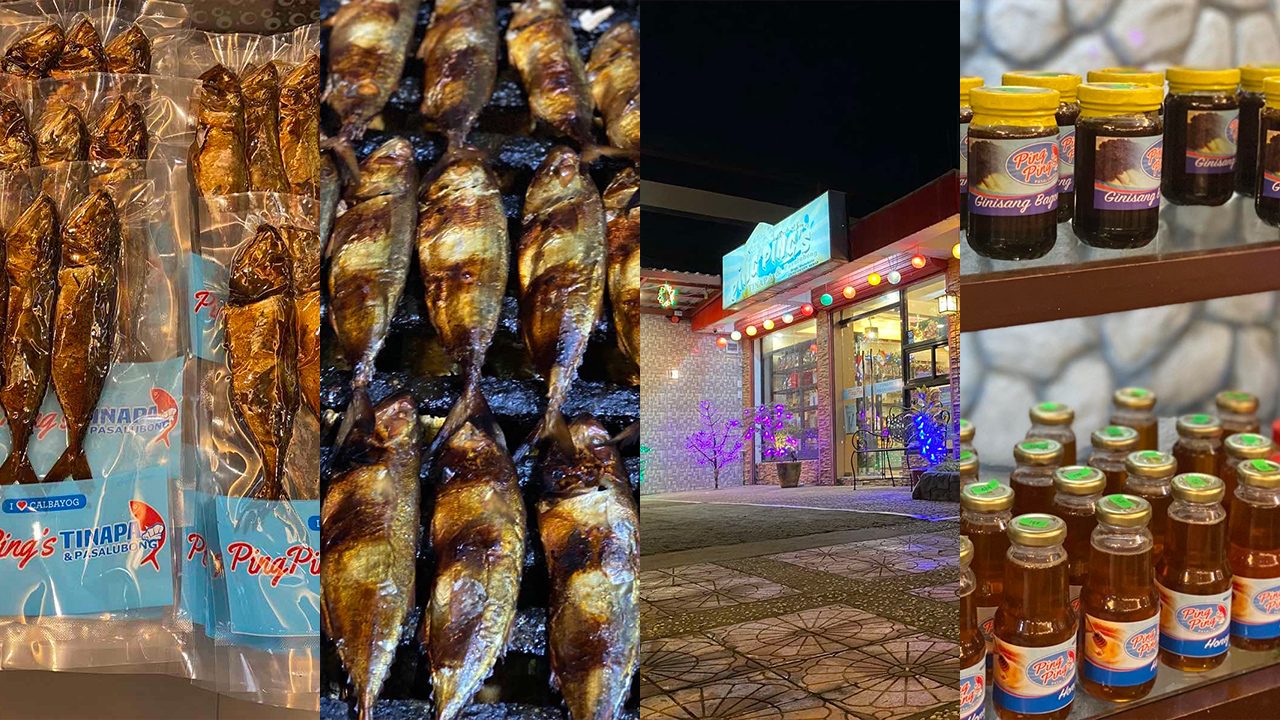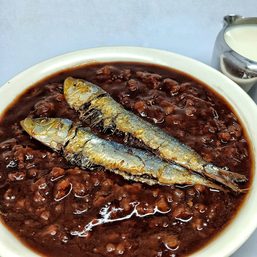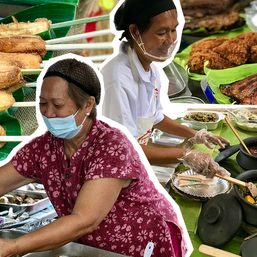SUMMARY
This is AI generated summarization, which may have errors. For context, always refer to the full article.

Tinapa or smoked fish can be found almost anywhere in the country, making it one of the easiest picks for lunch or dinner.
But in Calbayog City in Samar, tinapa is a celebrated cuisine served on special occasions, and given as pasalubong for family and friends.
There’s one particular store in Calbayog that will surely not disappoint tinapa lovers: Pingping’s. In fact, Pingping’s is so famous that the local government of Calbayog decided to place a “Tinapa Producers” marker right in front of its shop, which is located along Roño Street in Barangay Matobato.
Founded in 1983 by Guadalupe “Pingping” De Guzman, Pingping’s has become the most popular tinapa brand in Calbayog. But when Pingping passed away in 2015, her children took over the business.
One of Pingping’s children, Guada De Guzman-Abrera, decided to turn the brand into a one-stop pasalubong shop for tourists who wish to taste Samar’s different delicacies.

Some of the well-loved products from Samar that can be found in her store are corioso cookies, tahong crackers, locally-sourced honey, and other dried fish and goods.
While there is now more than one person managing Pingping’s, De Guzman-Abrera assures the same quality taste Calbayognons have loved ever since its inception.
Abrera recalled how her mom ran the business back then, saying all she ever wanted was for other people to get a taste of her tinapa and not necessarily to make money.
“Ang gusto lang niya matikman niya. Kahit walang siyang tubu-in, kahit malugi siya, okay lang. Basta mamake-sure lang niya na quality talaga ‘yung fish niya,” Abrera said.
(All she ever wanted was for other people to have a taste of her tinapa. If even if it meant that she wouldn’t profit from it at all, even if it meant a loss in her business. She just tried to make sure that the quality of the fish she was selling was there.)
But what exactly makes Pingping’s tinapa distinct from the others? It has a reputation for selling only freshly-made tinapa. Its use of wood shavings instead of wood chunks to smoke the fish also gives the fish a richer color and flavor.

Pingping’s process
Fishermen usually go to the sea to start catching fish as early as 3 in the morning. Then, at around 6 am, styro boxes filled with fresh fish arrive at Pingping’s to be sorted out.
They then thoroughly wash the fish, carefully remove the entrails, and make sure that the stomachs don’t get damaged in the process.
After cleaning the fish, they boil them in water with salt, dry them out, arrange them on a kaping or wooden tray, and then start the smoking process, which lasts for about 30-45 minutes.
While other tinapa vendors use bangus or milkfish, De Guzman-Abrera said they only use hasa-hasa and buraw or mackerel.
“I asked my mom before why the others use round scad or milkfish. She told me that the mackerel has a lump of much tastier meat and can last for days,” De Guzman-Abrera told Rappler in a mix of Waray and English.
Abrera said it is important to remove everything, including the black parts of the intestine, to avoid the buildup of smell, molds, and worms. This is one of the reasons why they don’t use tamban (round scad) or bangus (milkfish) to make tinapa.
“If you have ever seen round scad, you’ll notice that you can’t remove everything — including the intestines — as the stomach will get damaged. But you have no choice but to clean the stomach, so it would eventually get damaged,” she said.
“The same goes with milkfish. Because it has a small mouth, you will have a hard time cleaning it. And the head of a milkfish usually gets cut off in two days,” she added.
Even if there are just two or three rotten fish in a styro box, they will be forced to throw the whole batch to avoid spoiling the rest.
However, they also use tamban or sardinella, which is relatively cheaper for them, and more affordable to customers, according to Abrera.
De Guzman-Abrera said they source their fish from the city alone because longer travel time lead to the fish bloating. This also allows her to support local fishermen in Calbayog at the same time.
Since Pingping’s doesn’t use preservatives, they decline offers to export their tinapa to avoid compromising the product.
While travel restrictions affected the business at the start of the pandemic, De Guzman-Abrera said they were easily able to recover since food is a “necessity.”

Tips for purchasing
If you want to buy fresh ones, you can choose the ones packed in a box, which can last up to two weeks inside the refrigerator or five days outside the refrigerator.
For longer shelf life, you can opt for the vacuum-sealed ones which can last from six to three months, depending on the storage of the rest per batch after consumption.
You can buy Pingping’s tinapa at 3 for P100 for hasa-hasa and buraw, while the mackerel can be bought at P50 each.
Depending on the weather, mackerel can go as high as P55 per piece during habagat and as low as P45 if the weather is good. – Rappler.com
Add a comment
How does this make you feel?




![[WATCH] Binignit for Holy Week](https://www.rappler.com/tachyon/2021/03/binignit.jpg?resize=257%2C257&crop_strategy=attention)





There are no comments yet. Add your comment to start the conversation.